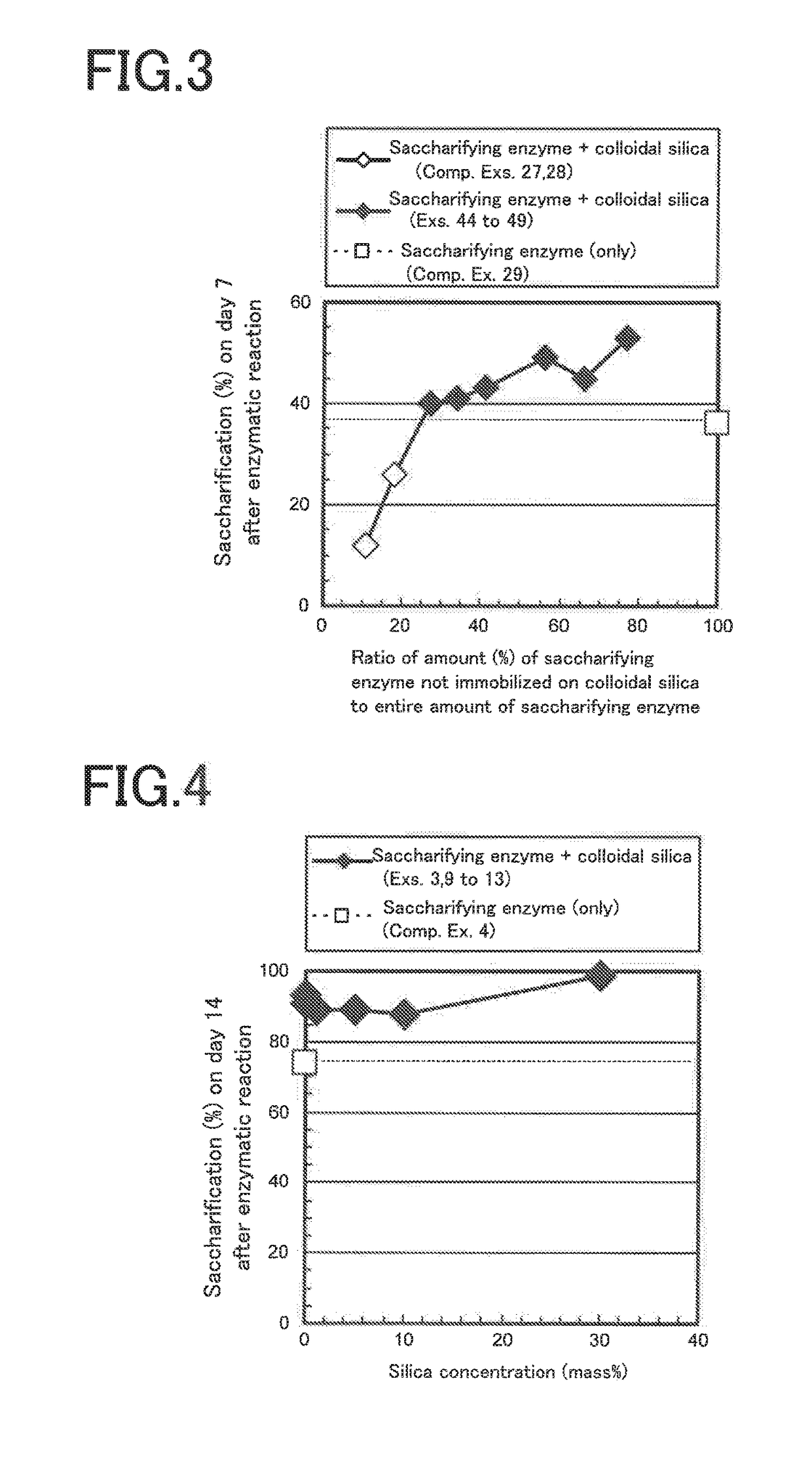Saccharification enzyme composition, saccharification reaction solution, and sugar production method
a technology of saccharide and enzyme composition, which is applied in the direction of glucose production, cellulose treatment using microorganisms/enzymes, on/in inorganic carriers, etc., can solve the problems of slow reaction rate, difficulty in controlling hydrolysis, and lowering the yield of saccharide of interest, so as to improve the saccharification rate
- Summary
- Abstract
- Description
- Claims
- Application Information
AI Technical Summary
Benefits of technology
Problems solved by technology
Method used
Image
Examples
examples
[0053]The present invention will next be described in more detail by way of examples, which should not be construed as limiting the invention thereto.
[0054]The mean primary particle size of colloidal silica and the particle size thereof measured through a dynamic light scattering method were determined by means of the following measurement apparatuses:
[0055]Apparatus in nitrogen adsorption method (determination of mean primary particle size): Monosorb MS-16 (product of Quantachrome Instruments Japan), and
[0056]Particle size analyzer in dynamic light scattering method.: Zetasizer Nano S (product of Malvern Instruments).
Saccharification enzyme compositions of Examples 1 to 7 and Comparative Example 1
[0057]Cellulase aqueous solutions (i.e., aqueous saccharification enzyme solutions) were prepared in the following manner. As a cellulase, a cellulase (product of MP biomedicals), having an optimum enzymatic activity at a pH of 3 to 6 and being derived from the Aspergillus niger) was used....
PUM
| Property | Measurement | Unit |
|---|---|---|
| particle size | aaaaa | aaaaa |
| particle size | aaaaa | aaaaa |
| particle size | aaaaa | aaaaa |
Abstract
Description
Claims
Application Information
 Login to View More
Login to View More - R&D
- Intellectual Property
- Life Sciences
- Materials
- Tech Scout
- Unparalleled Data Quality
- Higher Quality Content
- 60% Fewer Hallucinations
Browse by: Latest US Patents, China's latest patents, Technical Efficacy Thesaurus, Application Domain, Technology Topic, Popular Technical Reports.
© 2025 PatSnap. All rights reserved.Legal|Privacy policy|Modern Slavery Act Transparency Statement|Sitemap|About US| Contact US: help@patsnap.com



